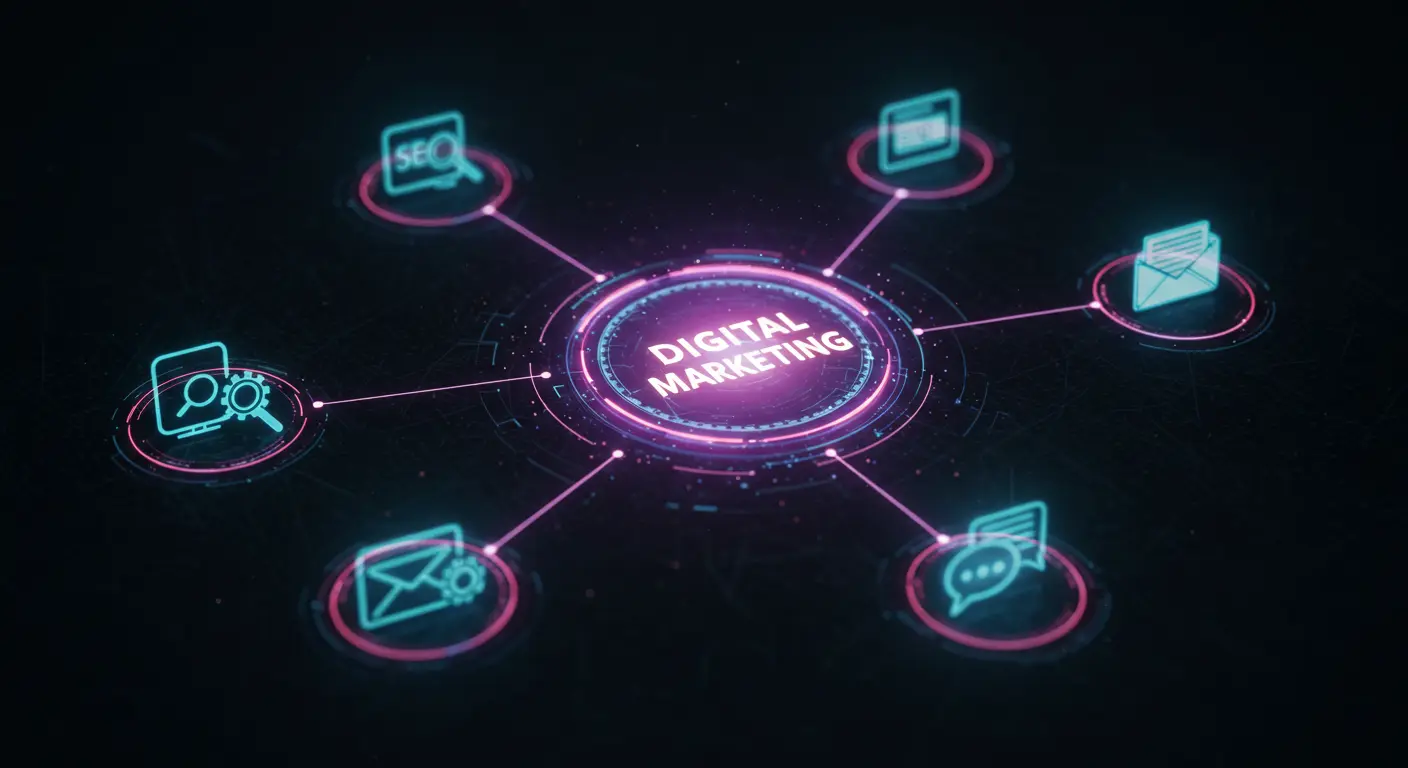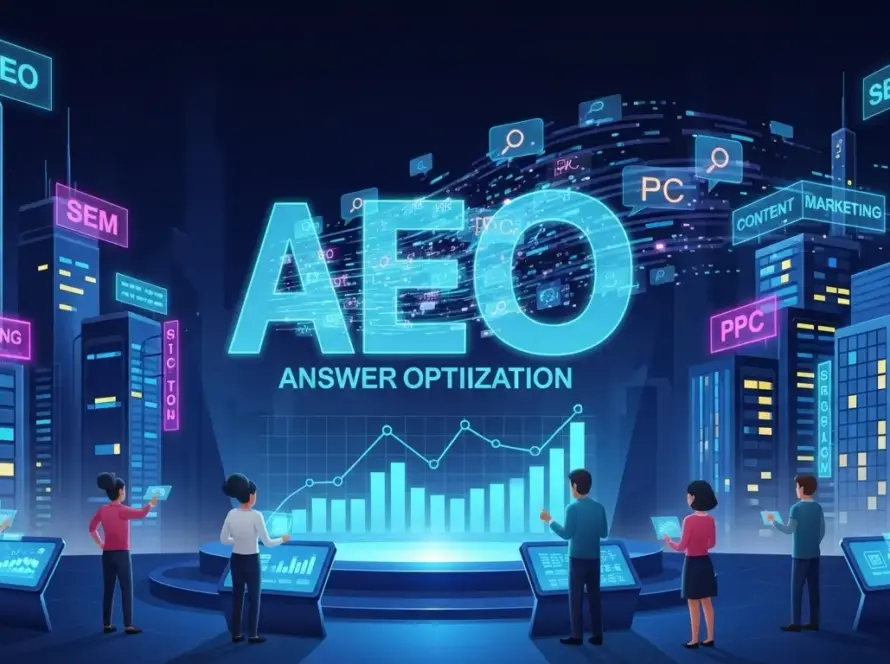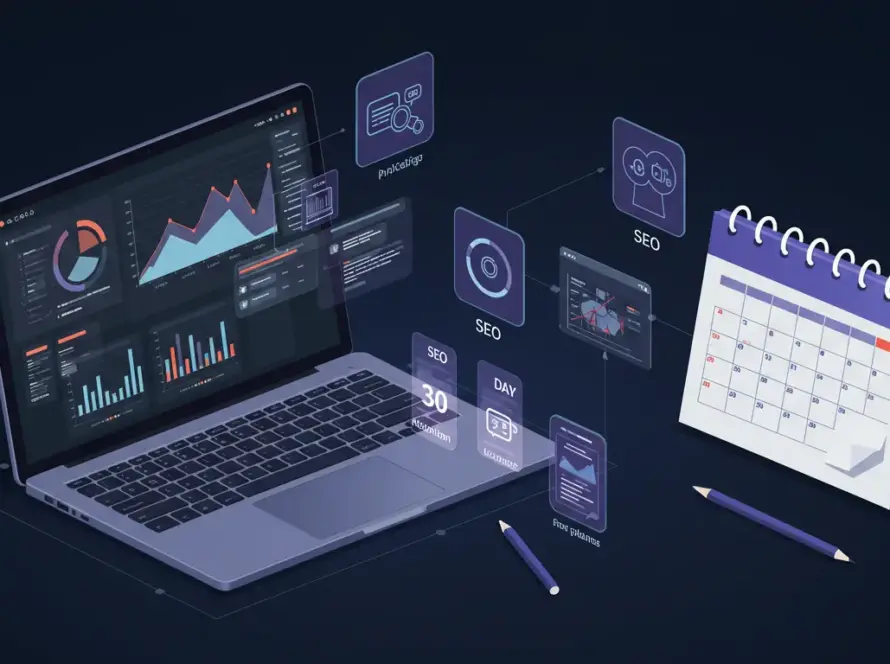Ever Wondered Why That Ad Knew Exactly What You Needed?
You’re scrolling through Instagram, thinking about trying a new face wash and suddenly, an ad pops up showing the exact one you were eyeing earlier. Feels a bit creepy, right?
But it’s not. That’s how digital marketing does its job quietly in the background.
And it’s not just about showing ads. It’s about understanding what people want, when they want it, and meeting them right where they are (online).
A true fun fact is that Digital Marketing jobs are growing 6% faster than average.
Many experts say it will be one of the most valuable skills to have in 2025. Businesses of all sizes from startups to big brands are pouring more and more into it. Why? Because that’s where the people are.
Whether you’re a business owner trying to reach more customers or just curious about how those tailored ads find you, this guide is for you.
We’ll talk about everything which includes: what digital marketing is, how it actually works, and why it’s changing the way businesses grow today.
The Magic Behind Digital Marketing
Imagine walking into a shop where the owner knows your name, remembers what you like, and shows you something that’s actually useful, something you needed at that moment. That’s what good digital marketing feels like.
At its core, digital marketing is about guiding someone through a journey:
Step 1: Find the right people
Step 2: Grab their attention
Step 3: Build trust
Step 4: Help them buy
Step 5: Keep them coming back
Simple, right?
Now here’s what makes digital marketing different and honestly, kind of amazing:
- It lets you target the right people for your message. Want to reach 25-year-old foodies in New York who love coffee and podcasts? You can.
- You don’t have to guess if it’s working. You can see the numbers, clicks, signups, and sales as they happen.
- You can tweak things on the spot. If a post flops, change the picture. If a headline feels off, rewrite it.
- It never sleeps. While you’re having dinner or sleeping in on Sunday, your online campaigns are still doing their job.
The goal is to appear where your audience is, when they need you, with something useful to say.
The 5-Step Digital Marketing Process (Your Roadmap)
If you’re wondering how businesses actually make digital marketing work, here’s the step-by-step roadmap. A simple (yet tough) process that helps turn strangers into loyal customers.
1. Research (Know Before You Go)
Before you post anything or run an ad, you need to know two (actually three) things:
- Who you’re talking to. Are they students, new parents, business owners? What do they care about? What apps do they use?
- What others are doing. Look at your competitors. What kind of content are they posting? What seems to be working for them?
- What success looks like for you. Are you trying to get more visitors to your website? More product sales? Or maybe just get your brand name out there?
Good research gives you a clear direction. Without it, you’re just guessing.
2. Create (Build Your Digital Presence)
Once you know who you’re talking to, it’s time to build something worth visiting.
- Start with a website. Think of it like your online shop window. Even if you’re not selling something directly, it should show who you are and what you do.
- Create useful content. Blog posts, videos, reels, or guides that answer real questions. The kind of stuff people actually want to see.
- Find your voice. Are you friendly? Serious? Quirky? How you sound online matters just as much as what you say.
3. Promote (Get Your Message Out There)
Now it’s time to share what you’ve built.
- Focus on the places where your audience already spends time. That might be Instagram, YouTube, LinkedIn, or even their email inbox.
- Use a mix of free and paid methods. Organic posts build trust. Paid ads bring in faster results.
- Be useful, not salesy. Help people first. That builds trust, and trust brings sales.
4. Analyze (The Numbers Tell the Story)
This is where the guessing stops.
- Check what’s working. Which posts get clicks, shares, or sales? Which ones flop?
- Find out where people are coming from. Did they find you through Google? A Facebook ad? A YouTube video?
- Tools today make it easy to track this, and yes, AI tools are making it even faster to spot patterns.
The numbers don’t lie. They help you see what’s really going on.
5. Optimize (Make It Better)
Now take what you learned and improve.
- Try different headlines, images, or post times.
- Keep testing small changes to see what clicks with your audience.
- Don’t be afraid to stop what isn’t working. Digital marketing lets you fix and improve without starting from scratch.
The best marketers aren’t perfect. They just keep learning, adjusting, and showing up.
Types of Digital Marketing (Your Toolkit)
Digital marketing isn’t one single thing. It’s a mix of tools and strategies that help you connect with your audience in different ways. Think of it like a toolbox—each one has a specific purpose, and when used right, they work together to build something strong.
Let’s walk through the main types:
Search Engine Optimization (SEO)
This helps your business show up when someone searches online.
- Example: A local bakery appears in the results when someone types “best birthday cakes near me”
- People usually trust whatever shows up on Google first.
- Fun fact: 49% of businesses say organic search gives them the best return on investment
Content Marketing
This is about creating useful, entertaining, or inspiring content people actually want.
- Example: A fitness brand sharing short workout videos instead of just saying “buy our protein shake”
- People are more likely to buy from brands they learn from, they enjoy watching
- 2025 trend: Short-form videos (like Reels or TikToks) bring the highest returns (so far)
Social Media Marketing
This is where brands meet people in their everyday scroll.
- Instagram is great for visuals, stories, and building a vibe
- LinkedIn works better for professionals or B2B businesses
- 2025 insight: Over 15 million AI-generated ads are being published each month as automation is growing fast
Pay-Per-Click (PPC) Advertising
This means paying only when someone clicks on your ad.
- Think of it like a billboard, but you only pay if someone actually looks at it
- Good for quick results or testing new ideas
- Stat: Digital ads can increase brand awareness by up to 80%
Email Marketing
Email still works although people think nobody checks their emails anymore.
- Feels personal when it’s written like a human, not a company
- Can be used for tips, updates, offers, or helpful guides
- ROI stat: For every $1 spent, you can get back $36 to $40
Mobile Marketing
This focuses on reaching people on their phones.
- Includes texts, app messages, or making sure your website works smoothly on small screens
- 2025 focus: In-app experiences and smart, AI-based notifications are on the rise
Quick Look: Digital Marketing Channels at a Glance
| Type | What It Does | 2025 Insight or Stat |
| SEO | Helps you show up in Google searches | 49% of businesses say it brings the best ROI |
| Content Marketing | Offers helpful blogs, videos, or guides | Short-form video brings the highest ROI |
| Social Media | Connects with users on platforms like Instagram or LinkedIn | 15M+ AI-generated ads per month |
| PPC Ads | Runs paid ads and pays only per click | Can boost brand awareness by 80% |
| Email Marketing | Sends direct messages to your audience | $36–$40 return for every $1 spent |
| Mobile Marketing | Targets people through phones and apps | AI is driving more personalized in-app experiences |
Why Digital Marketing Matters (The Real Benefits)
Marketing today isn’t just about pushing products. It’s about reaching real people where they already are and giving them something that feels useful or relevant.
Here’s how digital marketing stands out from traditional marketing:
Reach More People
Think about where your customers are right now. Chances are, they’re not flipping through magazines or watching TV ads. They’re on their phones, browsing Google, checking Instagram, or reading emails.
- You don’t need a massive budget to reach people around the world
- A small local business can show up right next to a big brand online
- Your reach isn’t limited by location, opening hours, or expensive airtime
Cost-Effective
One of the biggest perks of digital marketing? It works for almost any budget.
- You can start small for example: run a $10 ad, post some content, test things out
- If it works, you scale it
- You’re not wasting money on guesses, you’re investing in what brings results
Measurable Results
Gone are the days of wondering if your ad worked. Now, you can see everything.
- Know exactly how many people clicked your link or watched your video
- Find out where your customers came from and what made them convert
- Make changes on the fly if something’s not clicking
Personal Connection
This is where digital really shines. You’re not shouting at people, you’re simply talking to them.
- Send emails based on what someone actually looked at or clicked
- Share content that speaks to their needs, not just your product
- Build trust over time, not just make a quick sale
And the best part? People can talk back. They can reply, comment, react. That’s how real relationships start.
Proof Digital Marketing Works: Crumble Pakistan’s Meme Magic
Crumble Pakistan turned a small cookie shop into a viral brand by leaning into playful chaos and internet culture. What started with a simple idea: cookies served with a side of memes became a masterclass in digital marketing.
It began with a bold brand voice designed by Agha Abdullah and brought to life online by Huzaifa Amin. Instead of stiff, rehearsed campaigns, Crumble went for offbeat humor and post-ironic memes across all platforms, from TikTok and Instagram to even LinkedIn. That tone stayed consistent no matter where you found them, and it made people stop and pay attention.
Their strategy focused less on paid funnels and more on building community. They amplified user-generated content, jumped into comment threads, and sparked meme wars like when a delivery issue triggered playful cross-border banter. That kind of cultural engagement cut through the noise and connected them with Gen Z in a real way .
Here’s where the numbers really matter: Crumble’s TikTok went from 200 views in November 2023 to over 42,700 followers in July 2025. Individual posts regularly hit thousands of views. All this happened with almost zero advertising budget, relying on their conversational, chaotic style to drive growth.
That growth followed a clear pattern, First they grabbed attention with memes, then nurtured engagement with their mascot MeowBaksh, built hype through limited-time drops, and finally turned fans into loyal customers. They didn’t just rely on gut feeling but tracked metrics like views and followers to prove their organic strategy was working .
Crumble’s success shows a few key lessons:
- A strong, consistent voice works everywhere
- Cultural relevance beats generic ads
- Conversation builds community
- Data confirms creative risks can pay off
Their rise is the evidence that digital marketing can build a brand and a tribe at the same time. Crumble Pakistan didn’t wait for anyone’s permission instead made their own kind of content and people responded in droves. That’s the power of mixing meme culture with smart strategy.
What’s Coming Next (2025 Trends to Watch)
Digital marketing is moving fast. What worked last year might not be enough today. And what’s coming next? It’s already starting to take shape.
Here are the key trends you should know about in 2025:
1. AI Taking Over Routine Tasks
AI is handling a lot of the boring stuff—scheduling posts, analyzing data, writing email subject lines—but it’s not replacing the big-picture thinking. Human creativity is still what sets great brands apart. According to Statista, 61% of marketers already use AI for content creation in some form.
2. Zero-Click Searches
More people are getting answers straight from Google without clicking through to websites. These are called “zero-click” searches. As of early 2024, they made up over 57% of all Google searches. That means your content needs to answer questions directly and quickly—think clear headlines, FAQs, and structured snippets.
3. Voice Search Is Growing
More than one in three U.S. adults use voice assistants like Alexa or Siri. That number is expected to grow steadily through 2025. Businesses need to think about how people speak, not just how they type.
4. Retail Media Networks Are Booming
Big platforms like Amazon, Walmart, and even Uber are turning their apps into ad spaces. In fact, retail media is expected to become a $140 billion industry by 2026, with Amazon already leading the charge. These networks are a goldmine for reaching ready-to-buy customers.
5. Influencer Partnerships Are Evolving
It’s no longer just about follower count. Brands now care more about engagement and niche relevance. Micro-influencers (those with 10k–50k followers) often outperform big names when it comes to trust and ROI.
Getting Started (Your Next Steps)
Feeling ready to jump in? Here’s how to start without feeling overwhelmed.
Start Small
Pick one or two channels that make sense for your audience. Don’t try to do it all at once.
- If your customers hang out on Instagram, start there.
- If they use Google to find answers, focus on your website and blog content.
Be Helpful First
Don’t just sell. Create content that solves a problem, answers a question, or brings a smile. Help first, sell later.
Measure What Matters
Look at the basics: clicks, views, and conversions. You don’t need a dashboard full of graphs—just pay attention to what’s actually driving results.
Focus on People, Not Just Platforms
At the end of the day, you’re not marketing to screens. You’re connecting with people. Build trust, respond to messages, and keep showing up.
Conclusion
Digital marketing isn’t a trend. It’s the way modern businesses grow.
And it’s not about being everywhere all the time. It’s about showing up in the right places with the right message.
Start with what you have. Maybe that’s a website. Maybe it’s just a social media profile. Either way, you don’t need to be perfect, you just need to begin.
Show up. Stay consistent. Help your audience.
That’s where real growth begins.
And if you ever want someone reliable to handle it for you, PLYXIO is just a message away. We’ll take care of the work so you can focus on running your business.



